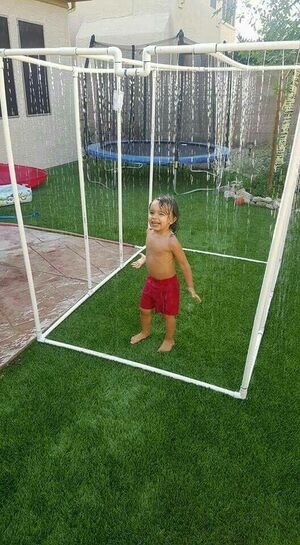Showers: Difference between revisions
No edit summary |
No edit summary |
||
| Line 25: | Line 25: | ||
Image-asset.png| | Image-asset.png| | ||
Schematic555.jpg| | Schematic555.jpg| | ||
</gallery> | </gallery> | ||
=Approaches= | =Approaches= | ||
<gallery> | |||
Image-asset (1).png|[https://showerloop.org/ ShowerLoop.org] shower | |||
</gallery> | |||
=References= | =References= | ||
* [https://en.wikipedia.org/wiki/Shower Wikipedia: Shower] | * [https://en.wikipedia.org/wiki/Shower Wikipedia: Shower] | ||
* [https://showerloop.org/ ShowerLoop.org] | * [https://showerloop.org/ ShowerLoop.org] | ||
Revision as of 00:52, 23 October 2021
| Tools: | Wrenches |
|---|---|
| Parts: | Frames, Nuts, Bolts, Hoses, Fluid pumps, Push fit couplers, Water filters |
| Techniques: | Tri joints, Bolting |
Introduction
A shower is a place in which a person bathes under a spray of typically warm or hot water. Indoors, there is a drain in the floor. Most showers have temperature, spray pressure and adjustable showerhead nozzle. The simplest showers have a swivelling nozzle aiming down on the user, while more complex showers have a showerhead connected to a hose that has a mounting bracket. This allows the showerer to hold the showerhead by hand to spray the water at different parts of their body. A shower can be installed in a small shower stall or bathtub with a plastic shower curtain or door. Showering is common in Western culture due to the efficiency of using it compared with a bathtub. Its use in hygiene is, therefore, common practice. A shower uses less water on average than a bath: 80 litres (18 imp gal; 21 US gal) for a shower compared with 150 litres (33 imp gal; 40 US gal) for a bath.
Challenges
Approaches
-
ShowerLoop.org shower


